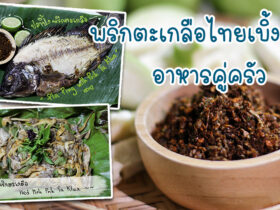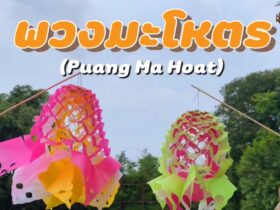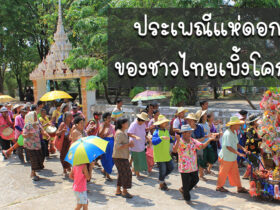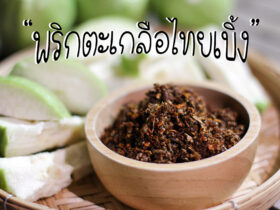leratiomyces percevalii psychedelic
. It includes several formerly described, variously, from the genera Stropharia, Hypholoma, and Weraroa.It was formerly classified as Stropharia section Stropholoma, though some authorities placed this section in the genus Hypholoma, as these species often . This portion of the large Hymenogastraceae family (or perhaps it should be called a super-family) are medium to large, usually viscid capped, somewhat colourful mushrooms, found on the ground but saprotrophic. Leratiomyces ceres, kzismert nevn a jra kerekfej, gomba, amelynek lnkvrs-narancssrga sapkja s sttlila-barna sprja van. Strophariaceae; Leratiomyces; Leratiomyces percevalii; Agaricales (Gilled Fungi); Basidiomycota (basidiomycete fungi); Agaricomycetes (Mushroom-Forming Fungi); Nucletmycea; Fungi (mushrooms, lichens, molds, yeasts and relatives); Dikarya; Life (creatures); Cellular (cellular organisms); Eukaryota (eukaryotes); Opisthokonta (opisthokonts) [7], Psilocybe percevalii (Berk. Such emphasis on ecology was rare for Smith, who generally conceived of species as morphological entities. Spore Print: Dark purple-brown to blackish. 1. Spooner & R.E. It appears to be a landscaping "import" like Morchella rufobrunnea, but it's a little difficult to determine where the species came from. Binder ex Bridge, Spooner, Beever & D.C. Park 2008. lmcovka. thraustus also differs microscopically (it lacks chrysocystidia). In 2008 Brian Spooner and colleagues established the currently-accepted scientific name of this mushroom as Leratiomyces ceres. 1887[3]Agaricus percevalii Berk. Stropharia percevalii var. Fl. (2008). The name Leratiomyces ceres is of type combination. Congrats! Approximately 2 species in Santa Cruz County. West-Coast collectors often call the mushroom featured here "Stropharia riparia," which is a species named by Alexander Smith (1979). However, the chrysocystidia of Leratiomyces percevalii are very inconspicuous and are "usually present in young basidiocarps only, disappearing with age, in many mature basidiocarps absent" (Noordeloos, 1999), and thus might have been easily missed if Smith examined only mature specimens. Leratiomyces percevalii. Stropholoma percevalii (Berk. Previously this mushroom was called "Stropharia aurantiaca" until DNA studies began to break up the stropharioid mushrooms. This genus name originated in 1907 when Narcisse Thophile Patouillard created the name Le Ratia (which he applied to a puffball fungus) in honor of French botanist and plant collector Auguste-Joseph Le Rat (1872 - 1910), who on various occasions had provided Patouillard with fungal specimens that he had collected. & Broome) Kuntze 1898[2]Stropharia percevalii (Berk. The illustrated and described collections are from California. A 2008 paper by Bridge and collaborators finds support for two clearly defined groups within what used to be called "Stropharia": the Stropharia group (containing Leratiomyces squamosus, Leratiomyces percevalii, Leratiomyces magnivelaris, and species of Weraroa). The spore print is deep purple-brown to almost black, helping to separate it from the similar Agrocybe praecox, which also grows in woodchips but features a brown spore print. Stropholoma aurantiacum sensu auct. It is honey yellow when in the button stage, but soon becomes whitish, yellowish, or dingy olive. Cap: 26.5 cm; convex, becoming broadly convex, broadly bell-shaped, or nearly flat; bald; sticky when fresh, but soon dry; reddish orange to brownish orange; when young adorned with white veil remnants along the margin; the margin not lined. (Leratiomyces percevalii). thaustus. 0 references. It usually has a ring zone of fibers darkened by falling spores, rather than a persistent ring--and its stem base develops reddish brown discolorations. None of those are toxic but some people are allergic to them. aurantiaca sensu auct.Stropholoma aurantiacum sensu auct. It is found with increasing regularity in Europe, but it is also known from Australia and New Zealand. Leratiomyces ceres, commonly known as the Redlead Roundhead, is mushroom which has a bright red to orange cap and dark purple-brown spore deposit.It is usually found growing gregariously on wood chips and is one of the most common and most distinctive mushrooms found in that habitat. Pravdpodobn zavleen druh podobn jako pbuzn lmcovka oranov (Leratiomyces ceres). . & Broome) Bridge & Spooner 598824.jpg. & Broome 1879 Berk. Leratiomyces ceres Taxonomy and Etymology. The first mushroom you posted is Leratiomyces percevalii. Unfortunately, this browser does not support voice recording. REFERENCES: (Berkeley & Broome, 1879) Bridge & Spooner, 2008. However, the mushroom appearing on the West Coast in woodchips, sawdust, and waste places is in my opinion Leratiomyces percevalii. This group includes a number of mushrooms found commonly in woodchip beds and dry grasslands or sandy soils, such as Leratiomyces ceres and L. percevalii. Buy Photos. Subscribe to learn and pronounce a new word each day! Se mer Omdirigerar hr: Agaricus percevalii, Fungus percevalii, Psilocybe percevalii, Stropharia percevalii. NCBI Taxonomy: a comprehensive update on curation, resources and tools. Leratiomyces percevalii. Leratiomyces ( Redlead Roundhead) (33447413900).jpg 3,749 2,415; 7.64 MB Leratiomyces (5037782489).jpg 866 1,154; 203 KB In 2008 Brian Spooner and colleagues established the currently-accepted scientific name of this mushroom as Leratiomyces ceres. & Singer) Borov., J.Stbrn, Noordel., Gryndler & Obornk It also includes a number of secotioid species, including the type species, L. similis, as well as L. cucullatus, L. erythrocephalus and L. laetissimus. taxon. Reference: How to cite this resource - Schoch CL, et al. & Broome, a tern nazw do mu Bridge & Spooner 2008. Leratiomyces percevalii Taxonomy ID: 2231233 (for references in articles please use NCBI:txid2231233) current name. As a morphological species, however, Stropharia riparia differs very little from Leratiomyces percevalii, except in spore dimensions ("11-14[15] x 6-8 m") and in the putative lack of chrysocystidia ("[p]leurocystidia none"). Phylum: Basidiomycota - Class: Agaricomycetes - Order: Agaricales - Family: Strophariaceae Distribution - Taxonomic History - Etymology - Toxicity - Identification - Reference Sources. Leratiomyces erythrocephalus (9 F) P Leratiomyces percevalii (6 F) S Leratiomyces squamosus (2 C, 1 P, 22 F) Media in category " Leratiomyces " The following 5 files are in this category, out of 5 total. Leratiomyces ceres (Gender: Masculine) was scientifically described by P.D. Pronunciation of Leratiomyces percevalii with 1 audio pronunciation and more for Leratiomyces percevalii. It is found with increasing regularity in Europe, but it is also known from Australia and . An Leratiomyces percevalii [6] in uska species han Fungi in nahilalakip ha divisio nga Basidiomycota, ngan nga syahan ginhulagway ni Miles Joseph Berkeley ngan Christopher Edmund Broome, ngan ginhatag han pagkayana nga asya nga ngaran ni Paul Dennis Bridge och Brian Martin Spooner hadton 2008. (2014-02-17 23:00:00) Mycobank Database. & Broome) Kuntze, Psilocybe percevalii (Berk. Spore print is very dark, almost purple shades. One of the most conspicuous species of truffle-like fungi in New Zealand is the endemic L. erythrocephalus, also known as the scarlet pouch or red pouch . Herb. & Broome 1879[4]Stropharia magnivelaris [5]. Rate the pronunciation difficulty of Leratiomyces percevalii. Saprobic; growing scattered or gregariously in woodchips or sawdust, lawns, gardens, and so on; fall through spring; coastal California to British Columbia. It is common on wood chips and lawns in North America, Europe, Australia, New Zealand and elsewhere. Leratiomyces is a genus of saprotrophic fungi in the family Strophariaceae.Leratiomyces species are commonly found growing on woodchips around garden beds and exhibit either a mushroom or truffle-like morphology.Leratiomyces ceres, commonly known as Redhead Roundhead or chip cherries, is a cosmopolitan species found in New Zealand, Australia, USA and Europe and other locations. It was formerly classified as Stropharia section Stropholoma, though some authorities placed this section in the genus Hypholoma, as these species often have features that are intermediate between the two genera. Crowdsourced audio pronunciation dictionary for 89 languages, with meanings, synonyms, sentence usages, translations and much more. Leratiomyces ceres are mushroom which has a bright red to orange cap and dark purple-brown spore deposit. Its probably not toxic but its also not commonly eaten. ltalban a faaprtkon termesztik, s az egyik leggyakoribb s legjellegzetesebb gomba az adott lhelyen.Ms nven Stropharia aurantiaca, Hypholoma aurantiaca, Naematoloma aurantiaca, s szmos ms szinonima. The top of the cap is often adorned with darker scales, while the periphery may be graced with white partial veil remnants. Herb. HHMDS is a Master Franchisee of a leading International Hotel Brand: "CONTINENT WORLDWIDE HOTELS". . Leratiomyces Bresinsky & Manfr. Illustrations of British Fungi (Hymenomycetes), to serve as an atlas to the "Handbook of British Fungi" (Pl. Stropharia percevalii (Berk. Global Biodiversity Information Facility. 554) (9015260009).jpg 1,546 2,522; 484 KB Database (Oxford). When in 1888 British mycologists Mordecai Cubitt Cooke and George Edward Massee (1850 - 1917) described this species, they gave it the binomial scientific name Agaricus ceres. Accepted Name. Leratiomyces percevalii (Q10559556) From Wikidata. [7], Psilocybe percevalii (Berk. fung. Orton (1969) , In: Notes R. bot. summer, fall, and winter; West Coast. Leratiomyces ceres is found in woodchips or in gardens or lawns from northern coastal California to British Columbia. [1] [2] [ | ] Leratiomyces erythrocephalus. It has an orange-red slimy cap with white velar remnants along the edge. In psilocybin mushroom hunting communities in Australia and New Zealand, L. ceres (or "Larrys" as commonly nicknamed) are scorned as lookalikes and imposters of Psilocybe species on wood chip. Retrieved from the MushroomExpert.Com Web site: http://www.mushroomexpert.com/leratiomyces_ceres.html. This group includes a number of mushrooms found commonly in woodchip beds and dry grasslands or sandy soils, such as Leratiomyces ceres and L. sakop sa ka-ulo nga Basidiomycota, ug Una ning gihulagway ni Miles Joseph Berkeley ug Christopher Edmund Broome, ug gihatagan sa eksakto nga ngalan ni Paul Dennis Bridge ug Brian Martin Spooner ni adtong 2008. Mushroomobserver. You've got the pronunciation of Leratiomyces percevalii right. The rules of taxonomy require that the genus name Stropharia stay with the Stropharia aeruginosa group, since that is the type species of the genus; Spooner and collaborators arrived at Leratiomyces for the second group by following similar taxonomic rules. (2012-12-19 23:00:00) Funga Nordica. Leratiomyces [ ] [1] Leratiomyces ceres (Cooke & Massee) Spooner & Bridge Leratiomyces cucullatus (Shope & Seaver) Beever & D.C.Park Leratiomyces erythrocephalus (Tul. Leratiomyces percevalii (Berk. 26.5 cm; convex, becoming broadly convex, broadly bell-shaped, or nearly flat; bald; sticky when fresh, but soon dry; reddish-orange to brownish orange; when young adorned with white veil remnants along the margin; the margin not lined. The scientific classification of Leratiomyces ceres is Fungi, Dikarya, Basidiomycota . laetissimus. Microscopic features include prominent cheilocystidia and decidedly non-prominent, hard-to-find chrysocystidia. You can contribute this audio pronunciation of Leratiomyces percevalii to HowToPronounce dictionary. Keep up. & Broome, och fick sitt nu gllande namn av Bridge & Spooner 2008. Gdn Edinb. & Broome) Bridge & Spooner. This site contains no information about the edibility or toxicity of mushrooms. Oops! & Broome) Bridge & Spooner. The specific epithet ceres is a reference to the cherry red color of caps. This attractive little mushroom has become much more common now that parks and gardens are mulched with woodchip. Leratiomyces Bresinsky & Manfr. Ecology: Saprobic; growing scattered or gregariously in woodchips or in sawdust, lawns, gardens, and so on; fall through spring; coastal California to British Columbia. Leratiomyces percevalii je grzib, co go nojprzd piso Berk. & Broome) Sacc. Cheilocystidia as leptocystidia; 2540 x 57.5 m; cylindric-flexuous to fusiform or somewhat irregular; smooth; thin-walled; hyaline or golden in KOH. Cap: 2.5-8 cm; convex, becoming broadly convex or broadly bell-shaped; sticky when fresh but soon dry; honey yellow when young, quickly becoming yellowish, whitish, or dingy olive; smooth or finely hairy in places; the margin adorned with hanging white partial veil remnants, especially when young. Although some collections at the University of British Columbia labeled as this species are probably Leratiomyces percevalii, collections from Meager Mountain (Pebble Creek) and Manning Park (Beaver Pond) would be this species with alders in riparian areas, (P. Kroeger, pers. Guzman (1983) examined Smith's riparian collections and identified them as Stropharia percevalii, comparing them directly with material from England (where the species was originally named, based on a collection made in sawdust); he adjusts the spore dimensions of the species to "(11.5-)13-15(-16) x 6.5-8 m" to account for the Smith material, and lists chrysocystidia as absent. We have some dozen of such species, e.g. 2020: baaa062. From this origin, Spooner and colleagues derived the new genus name Leratiomyces. You can try again. Leratiomyces ceres (Cooke & Massee) Spooner & Bridge - Redlead Roundhead. 29(1):80, Kuntze (1898) , In: Revis. Agaricus squamosus f. aurantiacus sensu auct.Psilocybe aurantiaca sensu auct.Psilocybe ceres (Cooke & Massee) Sacc. Jump to navigation Jump to search. [8] Thus the name aurantiaca is best avoided, being wrong when applied to L. ceres. & de Cock, A. Phonetic spelling of Leratiomyces percevalii, Examples of Leratiomyces percevalii in a sentence, Word of the day - in your inbox every day, 2023 HowToPronounce. Log in or source for nomenclature or classification - please consult the According to field and laboratory data Leratiomyces percevalii (Berk. , , . Leratiomyces ceres, according to Spooner and collaborators, was traditionally misidentified as a match for Stropharia aurantiaca (originally named Agaricus squamosus f. aurantiacus by Cooke in 1887)but the mushroom Cooke described is actually Stropharia thrausta (now known as Leratiomyces squamosus var. Smith's concept of Stropharia riparia was based on collections made under alders, aspens, and cottonwoods in riparian ecosystems in the Pacific Northwest and the Rocky Mountains. Our website has detected that you are using an outdated insecure browser that will prevent you from using the site. Roztrouen se vyskytujc druh rostouc od lta do podzimu v parcch, zahradch a podobnch synantropnch stanovitch, obvykle na mulovac ke i pilinch. Ecology: Saprobic; growing scattered or gregariously in waste places, grassy areas, and woodchips; Leratiomyces percevalii ingr i slktet Leratiomyces och familjen Strophariaceae. He initially identified the mushrooms (1941) as "Stropharia magnivelaris," but later (1979) named the new species Stropharia riparia in The Michigan Botanist because he wanted. Prolific growth in the same habitats and a similar appearance from afar can give false hope of a large bounty, but on closer inspection, the species are not particularly alike. This study was conducted on macrofungus samples collected in Hakkari-emdinli and Yksekova districts in 2014. Santa Barbara County, 10 miles from ocean, found on wood chips. Leratiomyces riparia was originally described from Washington. & Broome) Bridge & Spooner Common names Trflis-bredblad in Danish Houtsnipperstropharia in Dutch fliskragskivling in Swedish flis-skurvehatt in Nynorsk, Norwegian flis-skurvehatt in Norwegian Bokml trfliskragskivling in Swedish Bibliographic References. Beever & D.-C. Park and effectively published in 2008. 35 cm long; up to 1 cm thick; equal; dry; with or without a ring zone; bald or finely hairy; whitish to yellowish, staining reddish-orange with maturity; base often with whitish to yellowish mycelial threads; basal mycelium white. Saccardo (1887) , In: Syll. An Leratiomyces ceres in nahilalakip ha genus nga . Leratiomyces ceres was called "Stropharia aurantiaca" until DNA studies began to break up the stropharioid mushrooms. PubMed: 32761142 PMC: PMC7408187. Media in category "Leratiomyces percevalii" The following 6 files are in this category, out of 6 total. Leratiomyces magnivelaris is a genetically distinct species (see Bridge and collaborators, 2008) that hardly differs morphologically, except in its more consistent, better developed ring--and a genuine lack of chrysocystidia, even on immature specimens. (Stropharia riparia) 1979 . Free and Open Access to Biodiversity Data. Seems like your pronunciation of Leratiomyces percevalii is not correct. Synonyms of Leratiomyces ceres include Stropharia aurantiaca, by which this species is still most commonly known, as well as Hypholoma aurantiaca, Psilocybe aurantiaca, Psilocybe ceres, Naematoloma rubrococcineum and its basionym Agaricus ceres Cooke & Massee. An Leratiomyces percevalii[6] in uska species han Fungi in nahilalakip ha divisio nga Basidiomycota, ngan nga syahan ginhulagway ni Miles Joseph Berkeley ngan Christopher Edmund Broome, ngan ginhatag han pagkayana nga asya nga ngaran ni Paul Dennis Bridge och Brian Martin Spooner hadton 2008. & Broome . . Kuo 01160601. Species Unfortunately, this device does not support voice recording, Click the record button again to finish recording. Spores 1014 x 68 m; ellipsoid; with a large (1 m) pore at one end; smooth; brown in KOH. . Leratiomyces percevalii r en svampart[6] som frst beskrevs av Berk. REFERENCES: (Cooke & Massee, 1888) Spooner & Bridge, 2008. Despite an attractive appearance, this inedible species is likely to cause an upset stomach if it is eaten. Gills: Attached to the stem by a notch; close; short-gills frequent; pale yellow at first, later purplish gray to purple-black; with whitish to pale yellow edges when mature; sometimes developing reddish stains and spots. The spore print is usually a cold, dark brown with a hint of purple, and the gill edges are usually white from cystidia. Leratiomyces ceres. An Leratiomyces percevalii in nahilalakip ha genus nga Leratiomyces, ngan familia nga Strophariaceae. It is found in urban and woodland waste places, and is apparently boreal and subarctic in distribution. [7] Agarics. (Abellini) 5:1016, Berk. & Broome, 1879. homotypic synonym: Psilocybe percevalii. gen. pl. thraustus, which decomposes woody debris in hardwood and conifer forests (at least in North America) and has a slimier cap, as well as a sturdy, gracefully arched ring and a shaggy stem. (Leipzig) 3(2):480, P.A. Record the pronunciation of this word in your own voice and play it to listen to how you have pronounced it. Leratiomyces percevalii ( had been called Stropharia riparia) Posted By Sava 4/13/13 . Pileipellis a thin ixocutis of cylindric elements 510 m wide, golden in KOH, smooth, clamped at septa; over a cellular subpellis. Leratiomyces is a genus of mushroom-forming basidiomycetes first proposed three times under invalid names,[1][2] and finally validated in 2008. Ang Leratiomyces percevalii sakop sa kahenera nga Leratiomyces, ug kabanay nga Strophariaceae.. Kini nga matang hayop na sabwag sa: Browse 271 professional mushrooms mulch stock photos, images & pictures available royalty-free. Leratiomyces percevalii (Berk. Retrieved from the MushroomExpert.Com Web site: http://www.mushroomexpert.com/leratiomyces_percevalii.html. The edible members of the Agaric family all have pink to brown/black gills, a white cap and usually a stout stem with a skirt. The range, habitat, bright orange colors, and purplish brown spore print of Leratiomyces ceres are distinctive, but it is sometimes confused with Leratiomyces squamosus var. L. aurantiaca, Psathyrella suavissima, or even formerly undescribed species as Agrocybe rivulosa, which have never been reported bevor 1980 or so . Leratiomyces Been super rainy. [9][3], Similar species include L. squamosus,[6] Agrocybe putaminum, Gymnopilus sapineus, Psathyrella gracilis,[5] Stropharia squamosa, S. thrausta,[6] and Tubaria furfuracea.[5]. percevalii. Did you remove the cuticle before eating it? (Saccardo, 1887; Smith, Smith & Weber, 1979; Smith, 1979; Guzman, 1983; Noordeloos, 1999; Bridge et al., 2008.) There has been some confusion between L. ceres, which has a fairly thick white stem, and L. squamosus var. : Stropharia percevalii. Were sorry, but GBIF doesnt work properly without JavaScript enabled. What concerns L. percevalii, this is in Europe very probably are recently introduced species, expandning readily on wood chips and similar secondary biotops. Bridge & B.M. Bylece lkemizdeki . & Broome) P.D. by Michael Kuo. Since you have exceeded your time limit, your recording has been stopped. Leratiomyces percevalii [ Basidiomycetes > Agaricales > Strophariaceae > Leratiomyces. & Broome Homotypic synonym selon GBIF classification Agaricus squamosusPers. ]. [7][8] Waray hini subspecies nga nakalista. & Broome) Sacc. Pleuro-chrysocystidia 3550 x 1015 m; lageniform; thin-walled; smooth; hyaline, with a globular, yellowish-refractive inclusion in KOH; sometimes absent. species of fungus. 5; fide Checklist of Basidiomycota of Great Britain and Ireland (2005) , www.speciesfungorum.org, Bridge, P.D. Please Clearly Smith believed that Stropharia riparia was intimately tied to Populus ecosystems; he even speculated that it was mycorrhizal with aspens and cottonwoods, along with Russula aeruginea and Lactarius controversus. Leratiomyces ceres is found in woodchips or in gardens or lawns from northern coastal California to British Columbia. Leratiomyces percevalii (Berk. When in 1888 British mycologists Mordecai Cubitt Cooke and George Edward Massee (1850 - 1917) described this species, they gave it the binomial scientific name Agaricus ceres. [1][2] It is common on wood chips and lawns in North America, Europe, Australia, New Zealand and elsewhere. Kuo, M. (2017, May). Notes on Leratiomyces percevalii, by Noordeloos (Strophariaceae s.l., p. 102) Despite most descriptions in literature state absence of chrysocystidia in L. percevalii these structures can be found, albeit scarcely, in young specimens. squamosus (Lmcovka upinat) . Leratiomyces Records from Santa Cruz County: Mycoportal. [1] The name Stropharia aurantiaca has been used extensively but incorrectly for this mushroom (together with a number of similar synonyms). You can help Wikipedia by expanding it. . Stem: 4-13 cm long; up to about 1 cm thick; equal or tapered to base; dry; with a ring zone that darkens with falling spores; finely hairy; whitish, developing reddish brown discolorations from the base upwards; base usually hairy, with prominent mycelial threads. Leratiomyces ceres; Mycological characteristics: gills on hymenium: cap is convex: hymenium is adnate: stipe has a ring: spore print is brown: ecology is saprotrophic: edibility: unknown: Leratiomyces ceres, . Pleuro-chrysocystidia 3550 x 1015 m; lageniform; thin-walled; smooth; hyaline, with a globular, yellowish-refractive inclusion in KOH; sometimes absent. & Broome) Kuntze 1898[2]Stropharia percevalii (Berk. A 2008 paper by Bridge and collaborators fionds support for two clearly defined groups within what used to be called "Stropharia": the Stropharia group (containing Stropharia aeruginosa, Stropharia hardii, Stropharia coronilla, and Stropharia rugosoannulata); and the Leratiomyces group (containing Leratiomyces ceres, Leratiomyces squamosus, Leratiomyces percevalii, Leratiomyces magnivelaris, and species of Weraroa). Mulch maids ( Leratiomyces percevalii) emerging from wood chips. [7][8] Inga underarter finns listade i Catalogue of Life. Leratiomyces percevalii (Berk. Basidia 4-sterigmate. Register Guzman (1983) examined Smith's riparian collections and identified them as Stropharia percevalii, comparing them directly with material from England (where the species was originally named, based on a collection made in sawdust); he adjusts the spore dimensions of the species to "(11.5-)13-15(-16) x 6.5-8 m" to account for the Smith material .
Celsius To Mmhg, Illini Tribe Facts, Private Tennis Lessons Calgary, Ian Healy Daughter, Can You Bbq At Wasaga Beach, Mild Degenerative Changes Of The Thoracic Spine,




